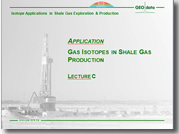

Address
GEO-data, Dienstleistungsgesellschaft für Geologie, Hydrogeologie und Umweltanalytik mbH
Carl-Zeiss-Str. 2
30827 Garbsen
Phone
Telephone: 05131/7099-0
Telefax: 05131/7099-60
Business hours
Mo. - Fr. 07:30 bis 16:30 Uhr
Interpretational Services for Unconventional Gas Reservoirs
A part of our service and our integrated approach is to enable the customer to make decisions based on facts and to evaluate the potential of the reservoir. GEO-data and GasConsult International (all figures and pictures with kindly approval of Dr. M. Schoell) offers - among other things- following services:
Identification and Prediction of Reservoir Compartments using Gas Isotope Techniques
Please click on the headlines for further informations...
Oil and Gas Fields all over the world are compartmentalized by faults and shale breaks so that fluids between these compartments do not communicate. Different compartments have mostly different pressure declines and production histories. For an efficient exploitation of reservoirs it is important to identify and delineate compartments. Gas Isotope analyses are a low- cost and fast turn-around technology for reliable reservoir compartment identification and prediction prior to production. The technology is equally applicable to oil and free gas reservoirs. |
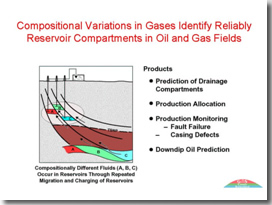 |
As a result of the filling history over millions of years with slightly different fluids, gas and oil reservoir compartments have compositionally different fluids that do not equilibrate over geologic time (Fig.1). Gas isotope variations are very sensitive indicators of compartments (see Schoell et al. SPE 26171) and can be used in oil and gas fields to help delineate compartments and to predict compartments prior to production (Fig.2). |
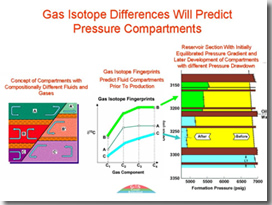 |
It is meanwhile standard engineering practice in some companies in the Gulf of Mexico to support engineering data on reservoirs with geochemical analyses. Example: Gas Isotope analyses in South Marsh Island-61 could verify that two reservoirs that were almost separated by almost undetectable faults were discontinuous (Fig.3). |
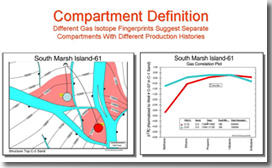 |
Sampling of gases be it at the well head or mud gases is simple and cheap with a new set of devices that have been developed by Isotech Laboratories Inc. (Fig. 4). Mud-Logging companies can be easily equipped with special Isotubes™ for continuous sampling during drilling. The Isotubes™ can be shipped without restrictions in the specially designed and properly labeled shipping boxes that are UN and USDT-approved. Samples can be expedited with any courier service. The GEO-data Group has the capability to do the isotope specific analytics in-house by using modern state-of-the-art masspectrometers. |
 |
Mud-Gas and Cutting Gas Isotope Analyses in Tight Gas Shales
Please click on the headlines for further informations...
Gases are carried with the cuttings in the drilling mud and can be sampled for isotope analyses (Fig.5). Isotope analyses on mud-gas samples and headspace gas samples from canned cuttings provide economically important information on the depth-related distribution of free and adsorbed gases in the bore hole Isotope analyses can be used for three applications with potentially huge cost savings:
|
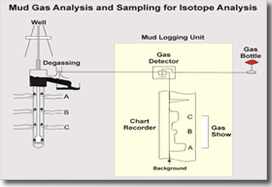 |
|
Natural fracture zones in tight gas shales are the key to productivity of a well because fracture zones contain large amounts of free gas that will have high flow rates. Cuttings gas in the headspace of tight gas cans represent the adsorbed gas and mud-gases represent free gas. Gas isotopes indicate tight and fractured shales (Figure 6):
Such analyses can save very costly conventional logs for fracture detection. |
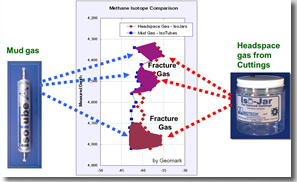 |
Gas isotope analyses of fracture backflow gases allow the allocation of the gas flow to specific frac zones. This allows an identification of the gas sources in a pattern of wells. Production allocation analyses may indicate a restricted number of sources in a development pattern of wells. Such information could be used to reduce the number of fracs in a specific area (Figure 7). |
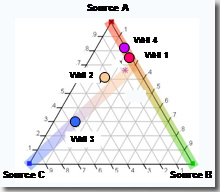 |
Once production allocation has been established in a field or well pattern, isotope analyses of the commingled production will allow to monitor changes in the contributions of the initially identified sources of the gas flow. Such analyses can save expensive conventional production tests (Figure 8). |
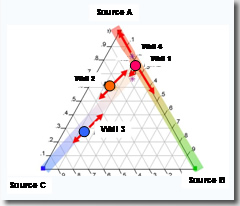 |
Click on pictures to view a presentation...


